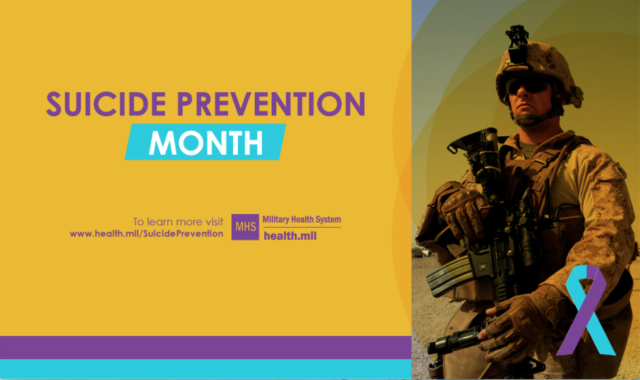
“Suicide is a leading cause of death for Americans – and it’s a tragedy for families and communities across the country. From individuals and communities to employers and healthcare professionals, everyone can play a role in efforts to help save lives and reverse this troubling rise in suicide. ” said CDC Principal Deputy Director Anne Schuchat, M.D.
By Dr. Bala Fischer and Dr. Kaffie Clark
Army Substance Abuse Program
USAG Stuttgart
Did you know that more Americans now die from suicide than are killed in car crashes each year?
According to the CDC, there has been a substantial spike in suicide deaths in the United States in recent years. Today, approximately 9.3 million Americans admit to having suicidal thoughts, and approximately 2.7 million Americans each year actually make a plan for how they would commit suicide. We are a deeply, deeply unhappy nation, but of course this phenomenon is not just limited to America. According to the World Health Organization, suicide is now the third highest cause of death in the entire world. Globally, suicide rates have soared by 60 percent over the past 45 years, and the WHO is now projecting that by the year 2020 someone will be committing suicide somewhere in the world every 20 seconds.
In the U.S., suicide rates have been rising in nearly every state, according to the latest Vital Signs report by the Centers for Disease Control and Prevention (CDC). In 2016, nearly 45,000 Americans age 10 or older died by suicide. Suicide is the 10th leading cause of death and is one of just three leading causes that are on the rise.
Suicide in the military
The U.S. military reflects an important subset of the U.S. population with both shared and unique characteristics when compared to the U.S. population. Historically, military suicide rates have been lower than those rates found in the general population. However, rising suicide rates among service members and veterans over the past decade have raised public and professional concerns. Suicide is the second leading cause of death in the U.S. military. According to the calendar year 2015 Department of Defense Suicide Event Report (DoDSER) annual report, the standardized suicide rate was 20.2 per 100,000 for the Active component. For the Selected Reserves component, the rates were 24.7 per 100,000 for the Reserves and 27.1 per 100,000 for the National Guard.
As of Aug. 5, 2018, there has been 197 active duty deaths related to suicidal behavior (either confirmed or suspected), which is an increase from 182 year-to-date 2017. All active duty services, except the Air Force, experienced a gliding increase in suicidal deaths.
Army Suicide Trends
- Highest suicide rates across the Army from 2014–2018 has rotated among ranks E-3 to E-6
- Death by suicide appears to occur earlier in a Soldier’s time in grade (first 18 months), analysis ongoing
- Deaths by suicide are once again more prevalent among the ranks of E-4 and E-3
GAT findings on Soldier emotional, spiritual, and physical attributes related to suicide
- Soldiers having low resiliency scores are 3x more likely to die by suicide than high resiliency individuals
- Depressed and overwhelmed individuals are 2x more likely to die by suicide than calm individuals
- Soldiers with low spiritual scores are 2x more likely to die by suicide than soldiers with high spiritual scores
- Tobacco users are 2x more likely to die by suicide than non-users
- Moderate (upper range) to heavy drinkers are 2x more likely to die by suicide than low risk drinkers
Find suicide prevention resources here:
USAG Stuttgart ASAP: 431-2530
Suicide/Crisis Hot line: 118 or 431-3102, or 0711-680-0113 or 07031-153102
National Suicide Prevention Lifeline 1-800-273-TALK (8255) En Español: 1-888-628-9454
Military Crisis Line: Text to 838255
